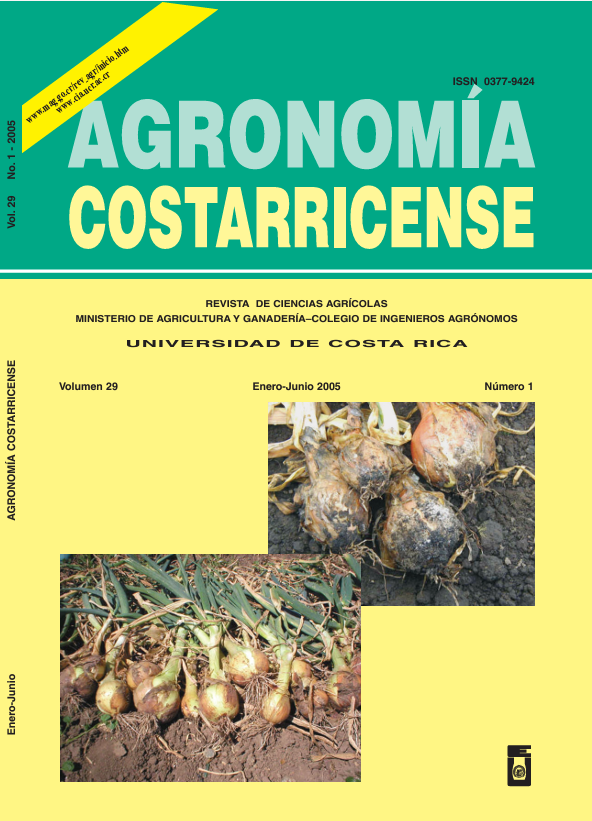Abstract
A survey to determine the presence of fungi with possible antagonistic effect, associated with sclerotia of Sclerotium cepivorum, causal agent of white rot of onion, was performed in the highlands of Cartago province, the main onion-production area in Costa Rica. From February to May, 2002, 10 farms were studied. Each farm was divided into 3 areas according to the historical incidence of the disease: high, intermediate and low. In each of these areas, the fungus-trapping survey was performed using the slcerotia-burial technique. Besides, diseased plants were collected and a soil sample was taken to determine inoculum density and to perform microbiological, chemical, texture and organic matter analyses. Alternaria spp., Fusarium spp., Gliocladium sp., Mucor sp., Penicillium spp., Rhizoctonia sp., Rhizopus sp. and Trichoderma spp. were the most predominant fungus genera found in association with sclerotia; Fusarium spp., Monilia sp., Mucor sp., Penicillium spp., Pythium sp., Rhizopus sp. and Trichoderma spp. were isolated from diseased onion bulbs and Gliocladium sp., Penicillium spp. and Trichoderma spp. were also found in the microbiological soil analysis. For all 10 farms, the highest population of microorganisms was found in the area considered as intermediate in level of infection. This study indicates that it is possible to isolate fungi with antagonistic effect, such as Trichoderma spp., Gliocladium sp. and Paecilomyces sp., from soils were fungicides have been applied for several years.
##plugins.facebook.comentarios##

This work is licensed under a Creative Commons Attribution-NonCommercial-NoDerivatives 4.0 International License.
Copyright (c) 2024 Agronomía Costarricense


